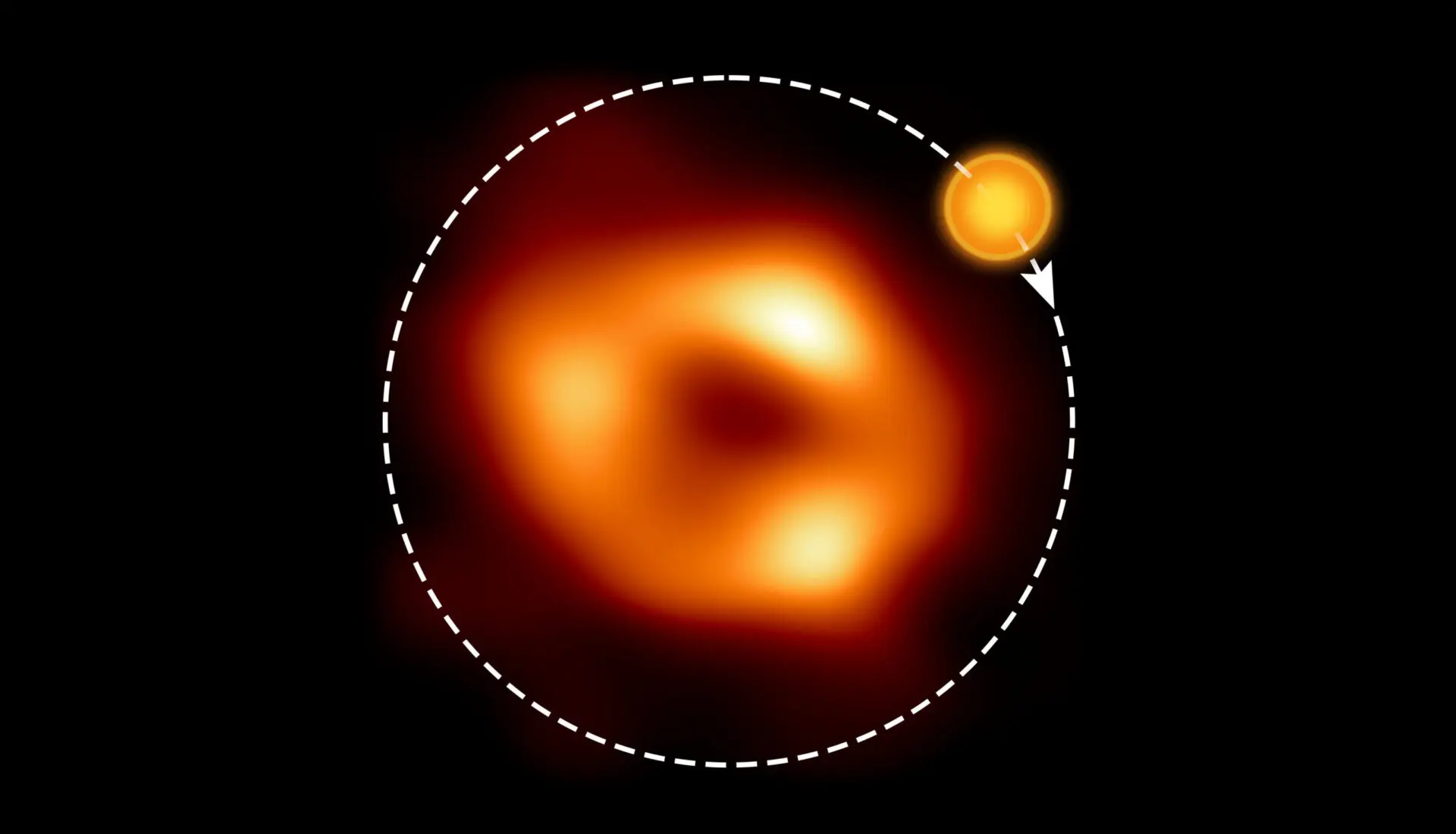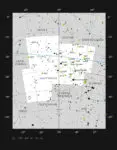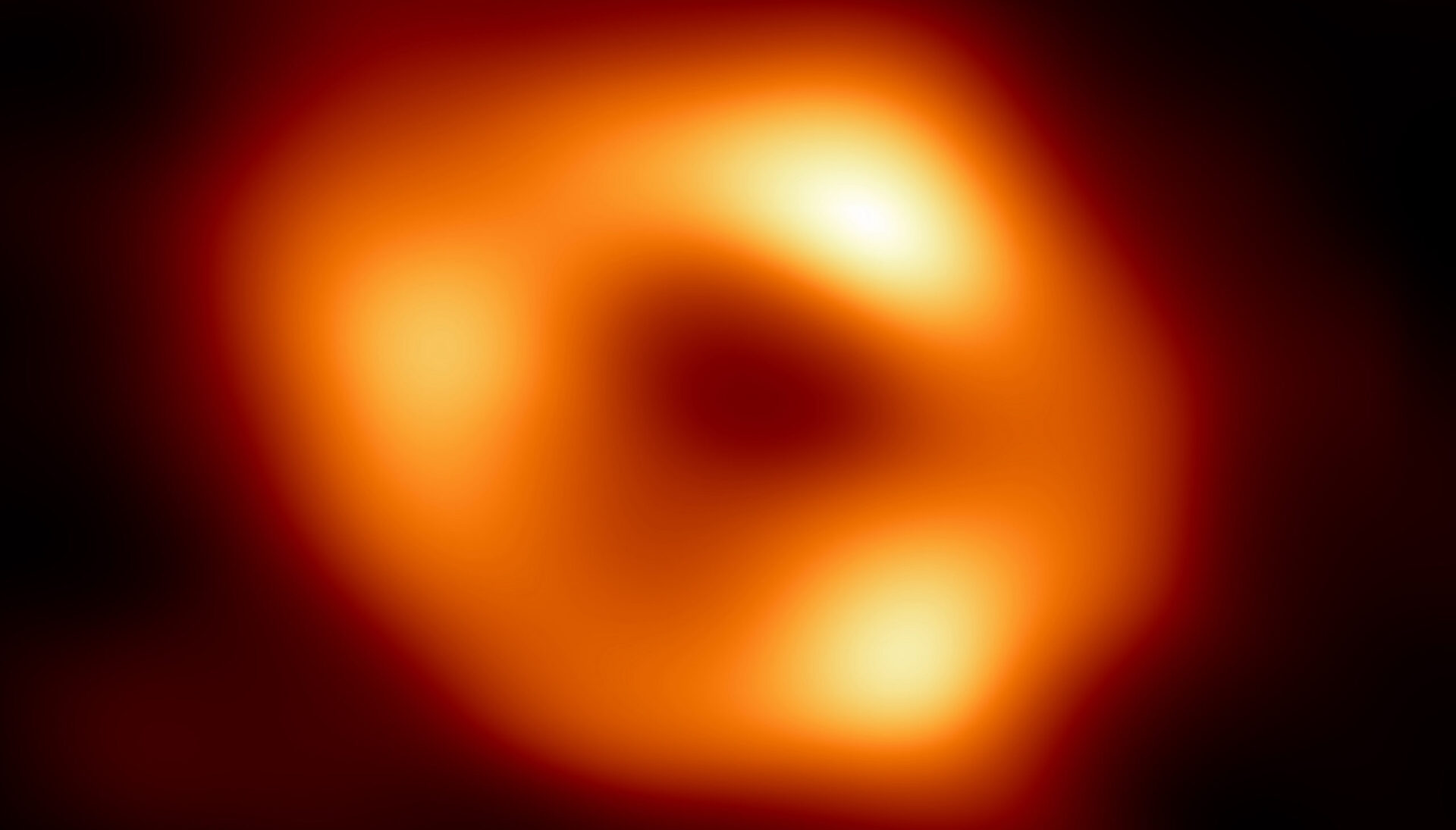Astronomers Detect a Hot Gas Bubble Swirling Around the Milky Way's Supermassive Black Hole
Using the Atacama Large Millimeter/submillimeter Array (ALMA), astronomers have spotted signs of a 'hot spot' orbiting Sagittarius A*, the black hole at the center of our galaxy. The finding helps us better understand our supermassive black hole's enigmatic and dynamic environment.
"We think we're looking at a hot bubble of gas zipping around Sagittarius A* on an orbit similar in size to that of the planet Mercury but making a full loop in just around 70 minutes. This requires a mind-blowing velocity of about 30% of the speed of light!" says Maciek Wielgus of the Max Planck Institute for Radio Astronomy in Bonn, Germany, who led the study published today in Astronomy & Astrophysics.
The observations were made with ALMA in the Chilean Andes during a campaign by the Event Horizon Telescope (EHT) Collaboration to image black holes. In April 2017, the EHT linked together eight existing radio telescopes worldwide, including ALMA, resulting in the recently released first-ever image of Sagittarius A*. To calibrate the EHT data, Wielgus and his colleagues, who are members of the EHT Collaboration, used ALMA data recorded simultaneously with the EHT observations of Sagittarius A*. To the team's surprise, there were more clues to the nature of the black hole hidden in the ALMA-only measurements.
By chance, some observations were done shortly after a burst or flare of X-ray energy was emitted from the center of our galaxy, which NASA's Chandra Space Telescope spotted. These kinds of flares, previously observed with X-ray and infrared telescopes, are thought to be associated with so-called 'hot spots', hot gas bubbles that orbit very fast and close to the black hole.
"What is really new and interesting is that such flares were so far only clearly present in X-ray and infrared observations of Sagittarius A*. Here we see for the first time a very strong indication that orbiting hot spots are also present in radio observations," says Wielgus, who is also affiliated with the Nicolaus Copernicus Astronomical Centre, Poland, and the Black Hole Initiative at Harvard University, USA.
"Perhaps these hot spots detected at infrared wavelengths are a manifestation of the same physical phenomenon: as infrared-emitting hot spots cool down, they become visible at longer wavelengths, like the ones observed by ALMA and the EHT," adds Jesse Vos, a Ph.D. student at Radboud University, the Netherlands, who was also involved in this study.
The flares were long thought to originate from magnetic interactions in the scorching gas orbiting very close to Sagittarius A*, and the new findings support this idea. "Now we find strong evidence for a magnetic origin of these flares, and our observations give us a clue about the geometry of the process. The new data are extremely helpful for building a theoretical interpretation of these events," says co-author Monika Mościbrodzka from Radboud University.
ALMA allows astronomers to study polarised radio emissions from Sagittarius A*, which can be used to unveil the black hole's magnetic field. The team used these observations and theoretical models to learn more about the formation of the hot spot and the environment it is embedded, including the magnetic field around Sagittarius A*. Their research provides more substantial constraints on the shape of this magnetic field than previous observations, helping astronomers uncover the nature of our black hole and its surroundings.
"ALMA has been since the beginning a revolutionary machine. Now at its full capacity, its collecting area is unmatched and allows the community to predict scenarios without needing to resolve or 'see' the emission structure. This time, instead of resolving the ring around the supermassive black hole like the EHT did, astronomers focused on how much ALMA alone saw the brightness and polarimetry of SgrA* change after a flaring event detected in X-rays. Based on that information, it was concluded that a hot cloud of electrons must have been orbiting around the supermassive black hole (clockwise direction as seen from Earth) at about 30% of light-speed and at an orbital distance from the black hole equivalent to Mercury's orbit" explains Hugo Messias, ALMA leader for these observations and co-author of this article. "This is yet another case in astronomy where, although we do not resolve the emission, we can predict what is happening at very small scales, and this time is only possible due to ALMA's sensitivity."
The observations confirm some of the previous discoveries made by the GRAVITY instrument at ESO's Very Large Telescope (VLT), which observes in the infrared. "In the future, we should be able to track hot spots across frequencies using coordinated multiwavelength observations with both GRAVITY and ALMA — the success of such an endeavor would be a true milestone for our understanding of the physics of flares in the Galactic center," says Ivan Marti-Vidal of the University of València in Spain, co-author of the study.
The team is also hoping to directly observe the orbiting gas clumps with the EHT, probe ever closer to the black hole, and learn more about it. "Hopefully, one day, we will be comfortable saying that we 'know' what is going on in Sagittarius A*," Wielgus concludes.
Additional Information
This research was presented in the paper “Orbital motion near Sagittarius A* – Constraints from polarimetric ALMA observations” to appear in Astronomy & Astrophysics (https://www.aanda.org/10.1051/0004-6361/202244493).
The original press release was published by the European Southern Observatory, an ALMA partner on behalf of Europe.
The Atacama Large Millimeter/submillimeter Array (ALMA), an international astronomy facility, is a partnership of the European Organisation for Astronomical Research in the Southern Hemisphere (ESO), the U.S. National Science Foundation (NSF) and the National Institutes of Natural Sciences (NINS) of Japan in cooperation with the Republic of Chile. ALMA is funded by ESO on behalf of its Member States, by NSF in cooperation with the National Research Council of Canada (NRC) and the Ministry of Science and Technology (MOST) and by NINS in cooperation with the Academia Sinica (AS) in Taiwan and the Korea Astronomy and Space Science Institute (KASI).
ALMA construction and operations are led by ESO on behalf of its Member States; by the National Radio Astronomy Observatory (NRAO), managed by Associated Universities, Inc. (AUI), on behalf of North America; and by the National Astronomical Observatory of Japan (NAOJ) on behalf of East Asia. The Joint ALMA Observatory (JAO) provides the unified leadership and management of the construction, commissioning and operation of ALMA.
Images
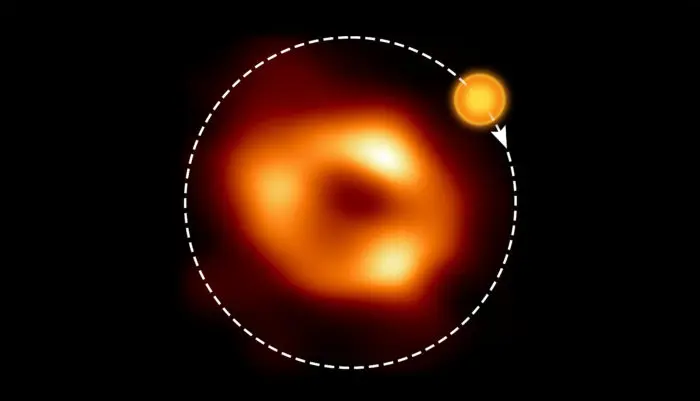
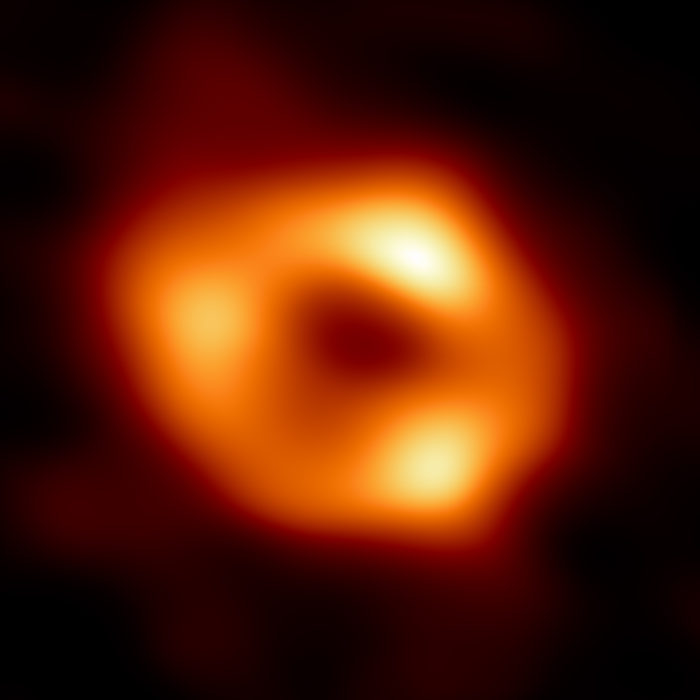
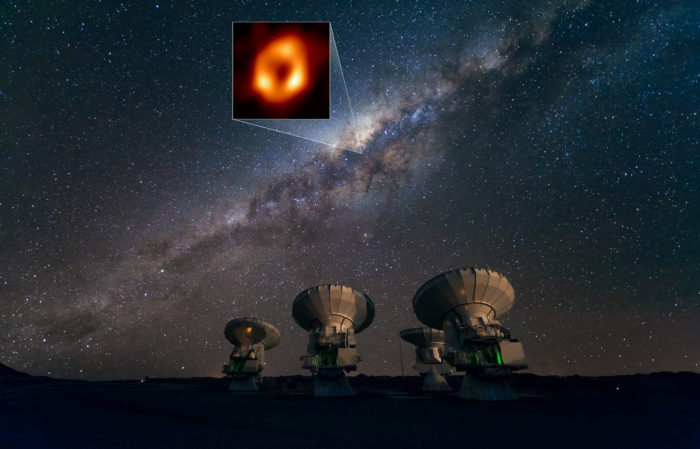
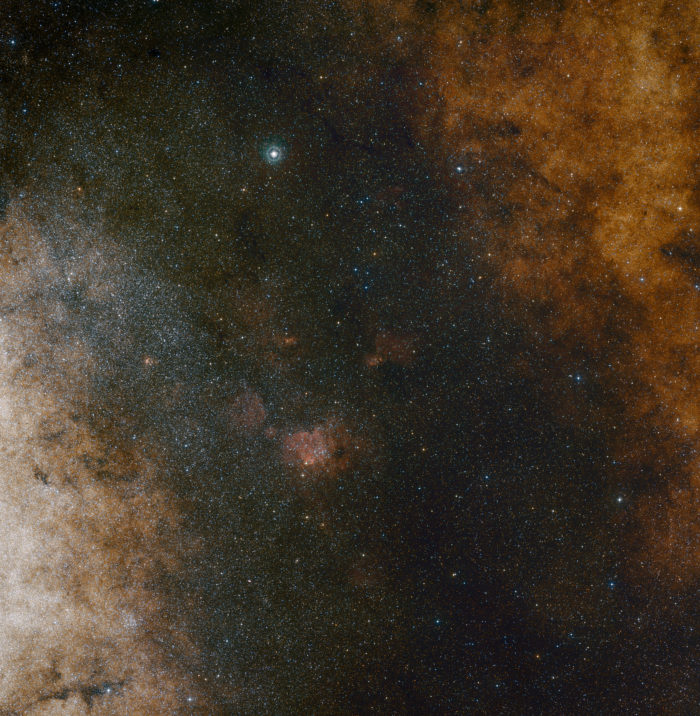
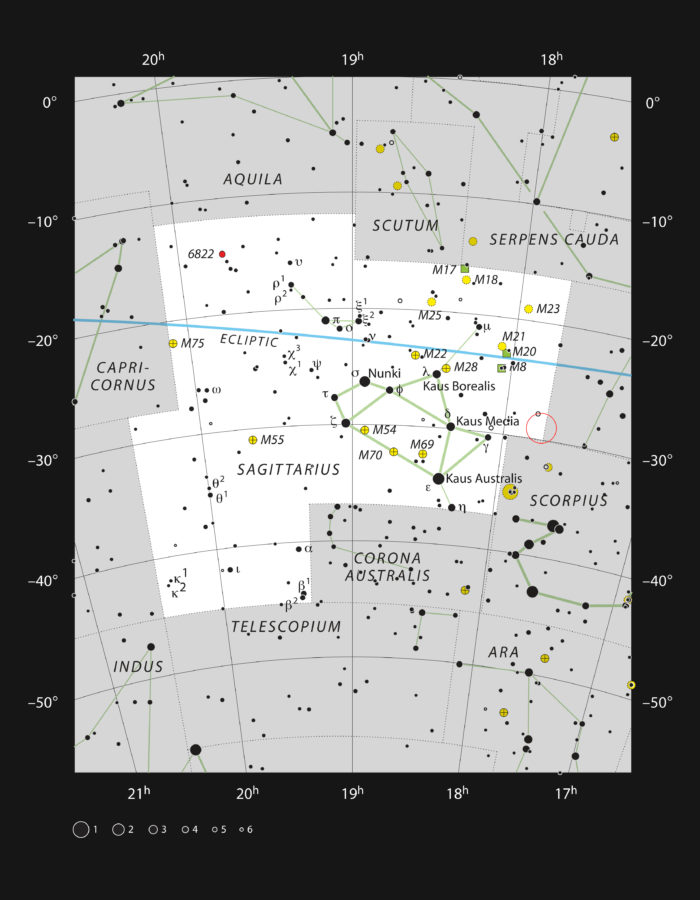
Videos
Footage and photos: ESO, EHT Collaboration, M. Kornmesser, L. Calçada (Acknowledgment: M. Wielgus), Jordy Davelaar et al./Radboud University/BlackHoleCam, ALMA (ESO/NAOJ/NRAO) and C. Malin (christophmalin.com). | Scientific consultant: Mariya Lyubenova.
Contacts
-
Nicolás Lira
Education and Public Outreach CoordinatorJoint ALMA Observatory, Santiago - ChilePhone: +56 2 2467 6519Cel: +56 9 9445 7726Email: [email protected] -
Bárbara Ferreira
ESO Media Manager -
Amy C. Oliver
Public Information & News Manager -
Junko Ueda
Public Information OfficerNAOJEmail: [email protected]
